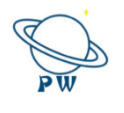Exploring the Direct Reduced Iron Market: Insights into Growth and Emerging Trends
Research Reports
Aug 21, 2024

The Direct Reduced Iron (DRI) Market has gained significant traction in recent years due to the increasing demand for steel across various industries, including construction, automotive, and manufacturing. DRI, also known as sponge iron, is produced from iron ore through a process that reduces it to metallic iron without melting it. This method, known as direct reduction, is an alternative to the traditional blast furnace route and has become increasingly popular due to its lower carbon emissions and energy requirements.
The Direct Reduced Iron Market Size was estimated at USD 38.93 Billion in 2022. The Direct Reduced Iron Industry is expected to grow from USD 41.51 Billion in 2023 to USD 74.04 Billion by 2032. exhibiting a compound annual growth rate (CAGR) of 6.64% during the forecast period (2024 – 2032).
Market Overview
The global DRI market has experienced steady growth, driven by the growing demand for steel, especially in developing economies. Countries such as India, China, and Brazil have seen rapid industrialization and urbanization, leading to increased construction activities and infrastructure development. This has fueled the demand for steel, subsequently driving the demand for DRI as a key raw material.
Key Drivers
-
Environmental Regulations and Sustainability: One of the primary drivers of the DRI market is the growing emphasis on sustainability and the reduction of carbon emissions. Traditional blast furnaces used in steel production are significant contributors to greenhouse gas emissions. In contrast, the DRI process emits less CO2, making it a more environmentally friendly option. With governments worldwide implementing stricter environmental regulations, steel manufacturers are increasingly turning to DRI to meet their production needs while adhering to these regulations.
-
Energy Efficiency: The DRI process is also more energy-efficient compared to traditional methods. It operates at lower temperatures and uses natural gas instead of coke, which is used in blast furnaces. This not only reduces energy consumption but also lowers production costs. As energy costs continue to rise, the cost-effectiveness of DRI makes it an attractive option for steel producers.
-
Growing Steel Demand: The global steel industry is expected to grow steadily, driven by increased demand from sectors such as construction, automotive, and infrastructure. DRI plays a crucial role in meeting this demand, as it can be used in electric arc furnaces (EAF) to produce high-quality steel. The flexibility of DRI in producing different steel grades makes it a valuable resource for manufacturers.
Request for Sample – https://www.marketresearchfuture.com/sample_request/22252
Challenges
Despite its advantages, the DRI market faces several challenges. The reliance on natural gas as a reducing agent limits its adoption in regions where natural gas is either expensive or not readily available. Additionally, the initial capital investment required for setting up DRI production facilities can be substantial, which may deter smaller players from entering the market.
Regional Insights
-
Asia-Pacific: The Asia-Pacific region dominates the DRI market, with India being the largest producer. The country’s abundant supply of iron ore and natural gas, coupled with growing steel demand, has positioned it as a key player in the global DRI market. China, despite its reliance on traditional blast furnaces, is also exploring DRI technology to reduce its carbon footprint.
-
Middle East & Africa: The Middle East, particularly countries like Iran and Saudi Arabia, is another significant market for DRI. The region’s vast natural gas reserves make it an ideal location for DRI production, and there is increasing investment in DRI plants to support the growing steel industry.
-
North America: In North America, the DRI market is gaining momentum, particularly in the United States, where there is a shift towards more sustainable steel production methods. The U.S. steel industry is investing in DRI technology to reduce carbon emissions and improve energy efficiency.
MRFR recognizes the following companies as the key Direct Reduced Iron Companies – Metalloinvest,Magnitogorsk Iron Steel Works,Hesteel Group,POSCO,Vale,Hebei Iron Steel Group,Hyundai Steel,Tata Steel,Rio Tinto,Jindal Steel Power,Baosteel,ArcelorMittal,Shougang Group,Ferrexpo,Ansteel
Buy Now – https://www.marketresearchfuture.com/checkout?currency=one_user-USD&report_id=22252
Future Outlook
The future of the DRI market looks promising, with continued growth expected as the global steel industry shifts towards more sustainable and energy-efficient production methods. Technological advancements and the development of alternative reducing agents, such as hydrogen, could further enhance the appeal of DRI, making it a critical component in the global steel supply chain.
Related Reports
Reflective Gloves Market – https://www.marketresearchfuture.com/reports/reflective-gloves-market-23444
Refractory Bricks Market – https://www.marketresearchfuture.com/reports/refractory-bricks-market-23446
Radiation Shielding Material Market – https://www.marketresearchfuture.com/reports/radiation-shielding-material-market-23442
Contact Information:
Contact: Market Research Future (Part of Wantstats Research and Media Private Limited) 99 Hudson Street, 5Th Floor New York, NY 10013 United States of America +1 628 258 0071 (US) +44 2035 002 764 (UK) Email: [email protected] Website: https://www.marketresearchfuture.com
Tags:
Research Newswire, English




